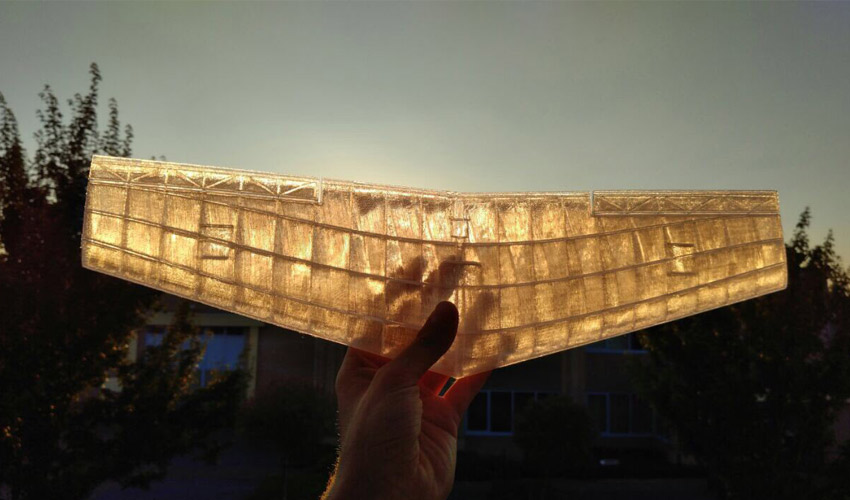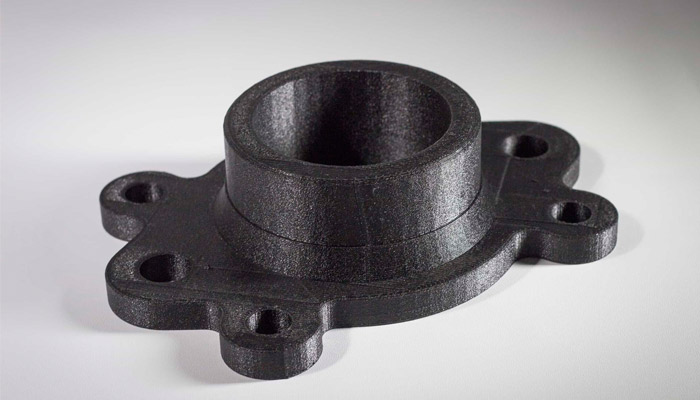All You Need to Know About PETG for 3D printing

PETG, or Polyethylene terephthalate glycol, is a thermoplastic that is one of the mostly widely used polymers used in additive manufacturing. Notably, it is a popular choice for filaments and fused deposition modeling as it combines both the simplicity of PLA 3D printing and the strength of ABS. It is an amorphous plastic, which can be 100% recyclable, with the same chemical composition as polyethylene terephthalate, better known by its acronym PET. In order to better under the material, the following guide will outline the characteristics of PETG, what you need to know for 3D printing with it, its main applications and manufacturers.
Production and Characteristics of PETG
In order to understand PETG, it’s important first to look at PET itself. PET is a well-known material in industry, estimated to be worth about $44.3B in 2022 alone, because it has been used in the manufacturing of bottles and packaging since the 1990s, replacing PVC. It also allows the production of synthetic fibers for clothing. But it is not common to use pure PET in 3D printing. Rather, glycol (G) is added to PET at a molecular level, allowing the material to have greater strength and durability while also making it more flexible.

Photo Credits: Thad Zajdowicz, CC0, via Wikimedia Commons
PETG is therefore a copolymer, combining the properties of PET and glycol. The addition of the latter reduces the overheating issues of PET (which prevent it from being used for additive manufacturing as it is) as well as its brittleness. Among the main characteristics of PETG are its hardness, impact and chemical resistance, transparency and ductility. It is an easily extruded material with good thermal stability. It is particularly appreciated for its food compatibility.
3D Printing with PETG
Regarding printing parameters, PETG has an extrusion temperature between 220° and 260°C and it is advised as well to use a heated printing bed which can be between 75-90°C. An ideal printing speed is 40-60mm/s. It is not recommended to use supports with PETG as it can stick too well to itself, making them difficult to remove after printing. Still, the material is relatively easy to print with, if more difficult than PLA while still having good properties.
That being said, there are downsides to the material. Notably, it requires a heating plate to avoid the warping effects which can occur with PETG – even if the warping rate is low, it is better to use a BuildTak sheet to make sure the material grips. It is also more prone to scratches than PLA. Finally, it can quickly take moisture and must be stored in a cool and dry environment. Furthermore, do note that as it is highly viscous, it can clog print heads.

PETG is known for its hardness and transparent appearance (photo credits: Taulman3D)
Applications With PETG
PETG can be used for a number of different applications. The first that comes to mind is of course the food industry. Due to its relation to PET, PETG is not just water-resistant but allowed to be in contact with food according to the FDA. This makes it suitable especially for packaging in the industry. But that is not all. Moreover, PETG is also suitable as an aligner material as well as for medical equipment and prosthesis thanks to its ability to be sterilized.
As may also be expected, PETG is also widely used for prototyping thanks to its relative cost-effectiveness and adequate properties. Additionally, due to its heat and chemical resistance, it can even be used in more durable applications such as in tooling, testing components or end-use parts for machines.
The Main Filament Manufacturers
Most filament manufacturers nowadays offer this material: Formfutura, ColorFabb, 3DXTech, Innofil3D, Polymaker or even proprietary brands such as Zortrax. In terms of format, like other filaments, there are 1.75 or 2.85 mm diameter spools, with different weights according to needs. Note that PETG is often reinforced with carbon fibers, which increases the rigidity of the part while optimizing its final weight. Nanovia, for example, offers this solution in its range of filaments. It has also developed an aramid-fiber reinforced PETG that reduces the fragile appearance of the PETG while increasing its stiffness and strength.

PETG can be reinforced with carbon fibers (photo credits: Fusion3 Design)
Finally, on the price side, be aware that it is a little more expensive than PLA: it costs between $35 and $40 for a classic 750 grams PETG spool – of course, some brands will be more or less expensive. A carbon fiber-reinforced PETG will increase the price of your spool for example.
Did you learn something about using PETG for 3D printing? Let us know in a comment below or on our Facebook and Twitter pages! And remember to sign up for our free weekly Newsletter, to get all the latest news in 3D printing sent straight to your inbox!
*Cover Image Credits: BlackBelt3D






